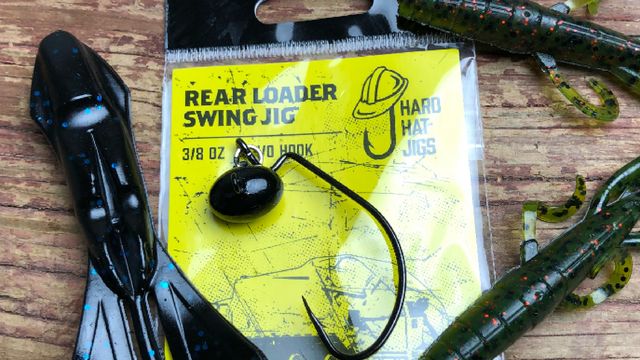
Swing Head Jig Fishing: Using Wobble Heads To Catch More Bass
The swing head jig is a popular alternative to the common football jig. When throwing a swing head jig, look for the same areas you typically throw a football jig. Often this means around rocks in 5-10 feet of water, but it can be fished all the way up to the bank and down in the deeper rocks too. This can be a great alternative when bass aren’t hitting a crankbait in these areas or are sticking close to bottom to chase crawfish.
Swing Head Jig Vs Football Head Jig
Although it is fished in a similar manner to a standard football jig, the swing head jig offers some extra versatility due to the hinged hook, allowing more movement and action on the trailer. The best option for pairing up a plastic is to rig a crawfish bait on the back. Although creature baits are a great option as well, the swing head can give great action to make a crawfish look real. One little trick I do to entice bass is a couple light flicks of the rod tip. These should be soft enough to not pull the bait off the bottom, but just enough to make the claws flare. The movement allowed by the swing jig will cause the bait to twitch on the back and appear as though the craw is ready to defend itself.
Retrieving A Swing Head Jig
When retrieving the bait, it is as simple as dragging it along the bottom. Pulling it through the rocks will cause the trailer to swing back and forth, throwing the claws around, mimicking a crawfish quickly darting across the bottom. When the bait is bumped up against a rock, a slight pop to pull it over can trigger a reaction strike from a bass watching it crawl among the rocks. The design of the jig head will also help prevent times when the bait might get lodged in those little gaps.
Adding Flair To Your Swing Head Jig
Due to the added action, another great option for a swing jig is to fish it with a worm on the back to hook into those finicky bass. The presentation becomes similar to a shakey head, as it keeps the head of the worm down and lets the tail stick up. Without the restriction of a locked in place hook, the worm on the back will have some extra subtle movement as it can sway from side to side with the movements of the water. This can be just enough to entice a bass that wouldn’t hit other baits.
Updated August 15th, 2018 at 11:42 AM CT
